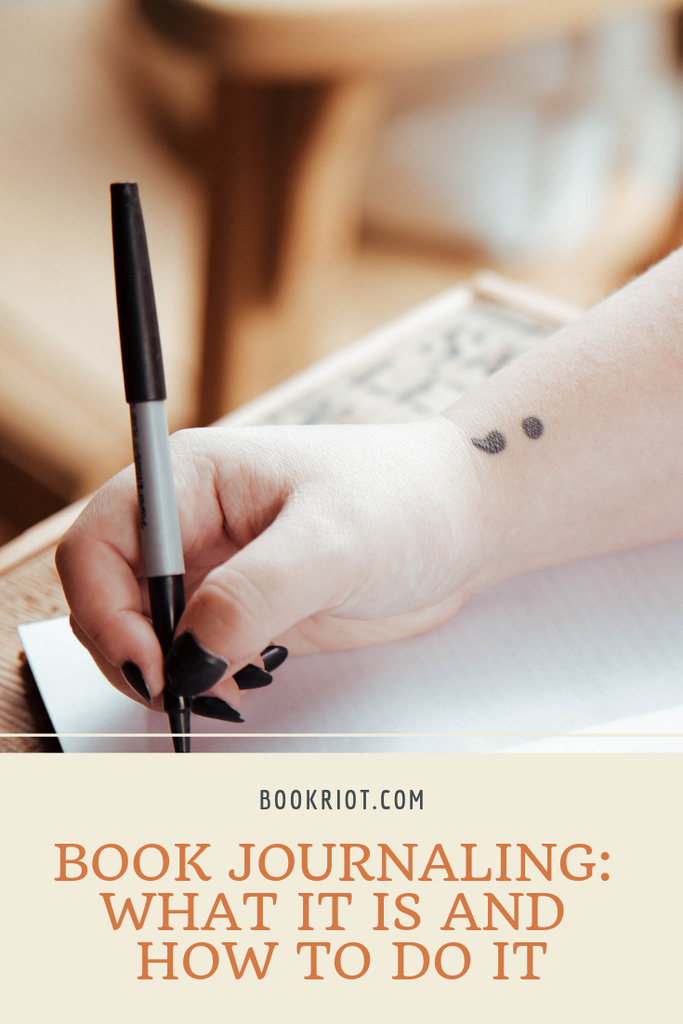As a teen, I spent a lot of time listening to music and interacting with songs in the forms of writing down favorite lines and illustrating lyrics. Why it never occurred to me to do this with books—which have, overall, been a larger part of my life than has music—is beyond me. The idea was first evident to me when I saw a post about it on a Facebook group for library professionals. Lisa Johnson described a method she utilizes for retaining more of what she read. Described as “using a reader’s notebook,” Johnson’s process is simple and easily adaptable to the reader’s needs.
A post shared by Lisa Johnson, M.Ed. (@notechef4u) on Dec 22, 2018 at 6:04am PST Outlined in both her Instagram post above and her book, Creatively Productive, the process is this: “(1) Read and highlight the book (2) Choose colors and objects that represent or mimic the tone or mood of the book (3) Write the title similarly as it is on the book (4) Jot down my favorite quotes, words, phrases, literary devices, or things that spoke to or resonated with me as I read the book.” In doing this, readers are tasked with reading more intentionally and deeply before reiterating parts of the book that are important to them in the journal, thus making the book itself more memorable. Plus, readers then have easy access to those parts that were important in the form of their journal. This works for both fiction and nonfiction—in one example, Johnson shares her spread for Ellen Hopkins’s Crank, proving that even verse can be effectively transcribed into the reading journal. In addition to individual spreads for books, readers might also include their to-be-read and have-read list. For readers who like the bullet journal method, book journaling can easily be incorporated into an existing bullet journal and a have-read list can also serve as a table of contents, provided the pages of the spreads are numbered. Johnson recommends a handful of materials for readers who like to fancy up their notes—washi tape, permanent double-sided tape (especially for notebooks with thinner pages that might benefit from things like cardstock or index cards), magazines for cutting out images and words, colorful pens or markers, stickers, labels, mementos, and ephemera. All of these can enhance book spreads. Book journaling can be done either digitally or in analog, so if you prefer not to collect lots of supplies, try the same process on Google Docs or another platform, where you can gather images and other pieces from across the internet to design your spread. If you’re looking for more guidance or inspiration on getting started with book journaling, Instagram has thousands of posts tagged #bookjournal (and many ‘grammers include related hashtags in their posts—so check those, too!). You might be interested in doing something that primarily captures the visuals of the book.
A post shared by Holly (@coffeefae) on Feb 22, 2019 at 12:10pm PST Or maybe a focus on quotes is better suited to your needs. https://www.instagram.com/p/BuMDTgQHyXa/ Perhaps you’re just looking for a better method to review books, either for your own use or for sharing.
A post shared by The Study Theory (@thestudytheory) on Feb 17, 2019 at 9:04pm PST There are so many ways to try book journaling…
A post shared by tee (@paper.stdy) on Feb 17, 2019 at 8:04am PST …and there’s no right way to do it!
A post shared by Roberta 🌸 (@robsinbujoland) on Feb 13, 2019 at 5:49am PST If you’re an educator, you might try implementing book journaling with the students in your life. Teens in particular may be drawn to the artistic potential in book journaling and ultimately walk away with a better understanding and memory of the reading material. Find other book journal methods here and here.
